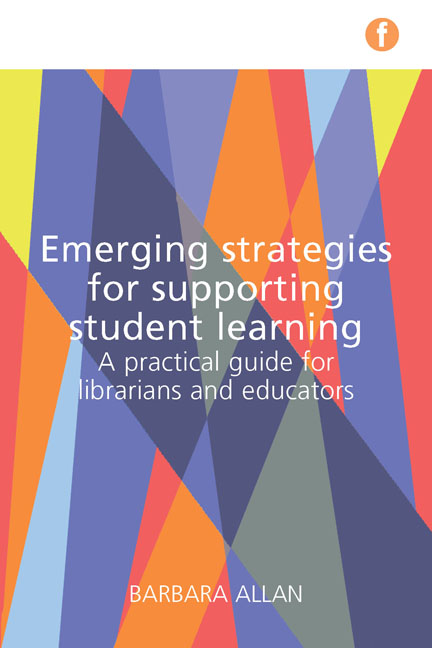Book contents
- Frontmatter
- Contents
- Figures and tables
- Acknowledgements
- 1 Introduction
- 2 Working with students
- 3 Digital literacies
- 4 Employability
- 5 Approaches to learning and teaching
- 6 Learning and teaching activities
- 7 Making it happen
- 8 Designing face-to-face, blended and online courses
- 9 Delivering learning experiences
- 10 Evaluation of learning and teaching activities and courses
- 11 Lifelong professional development
- Index
2 - Working with students
Published online by Cambridge University Press: 08 June 2018
- Frontmatter
- Contents
- Figures and tables
- Acknowledgements
- 1 Introduction
- 2 Working with students
- 3 Digital literacies
- 4 Employability
- 5 Approaches to learning and teaching
- 6 Learning and teaching activities
- 7 Making it happen
- 8 Designing face-to-face, blended and online courses
- 9 Delivering learning experiences
- 10 Evaluation of learning and teaching activities and courses
- 11 Lifelong professional development
- Index
Summary
Introduction
This chapter provides an overview of students in colleges and universities, and different ways of working with them. Student populations in higher education are extremely diverse and the following themes and categories are explored in this chapter: students in the digital age; international students; students with disabilities; part-time students; and diversity as a result of individual learning styles. This is followed by a section on the implications of diverse student populations on learning and teaching.
Diverse student populations
Over the last 20 years there has been an explosion in university enrolments in most countries across the world (UNESCO, 2015). In the UK many colleges and universities highlight their diverse student populations in their marketing materials, often stating that their students come from more than 100 or even 150 countries. This gives students advantages through studying with others from different countries and creating lifetime global networks.
The diversity of student populations goes well beyond students’ home backgrounds. These are some of the different factors related to diverse student populations that affect a student's experience:
• academic skills
• age
• cultural background
• digital skills
• educational experiences
• emotional intelligence
• emotional resilience
• employment experiences
• ethnic background
• faith
• financial situation
• gender
• health
• information technology skills
• language
• learning styles
• life experiences
• literacy and numeracy
• mental health
• nationality
• previous educational experiences
• special needs.
Students who appear superficially to come from the same background may be very different, as illustrated in the following example.
Example: Two students from Guangzhou, China
This example is based on the author's experience of teaching Chinese students in a UK university in the north of England. As part of an induction activity, the students were asked to introduce themselves to the whole class. Names have been changed to protect their identity.
One student, Amy Ho, explained that she had attended a British boarding school in Yorkshire for five years and had obtained four A levels and 12 GCSEs. Her family lived in Guangzhou and she was used to travelling from the UK to Guangzhou for her holidays, though she often holidayed in Dubai and Australia.
- Type
- Chapter
- Information
- Emerging Strategies for Supporting Student LearningA Practical Guide for Librarians and Educators, pp. 19 - 32Publisher: FacetPrint publication year: 2016



